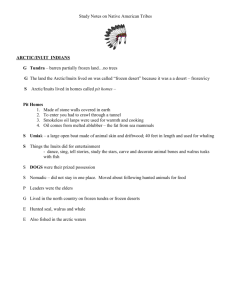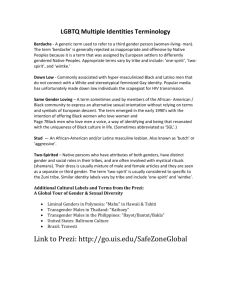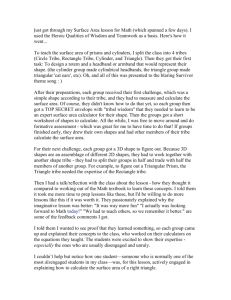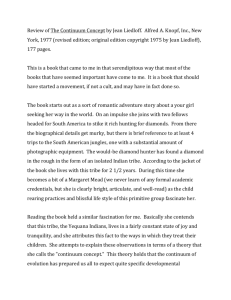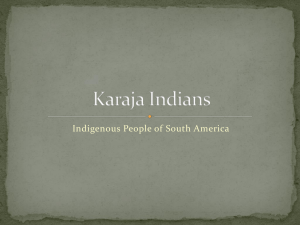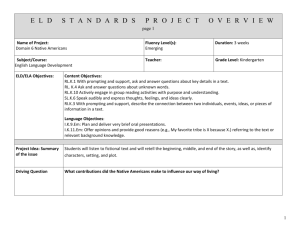Title of Unit: - 620-bam
advertisement
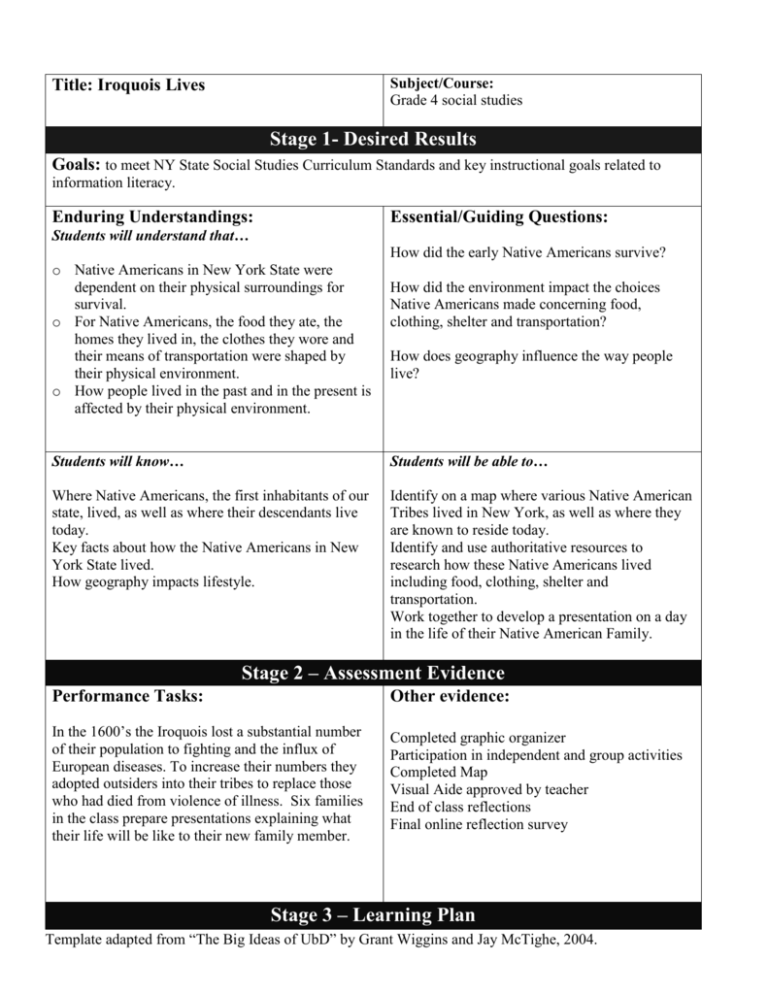
Subject/Course: Grade 4 social studies Title: Iroquois Lives Stage 1- Desired Results Goals: to meet NY State Social Studies Curriculum Standards and key instructional goals related to information literacy. Enduring Understandings: Essential/Guiding Questions: Students will understand that… How did the early Native Americans survive? o Native Americans in New York State were dependent on their physical surroundings for survival. o For Native Americans, the food they ate, the homes they lived in, the clothes they wore and their means of transportation were shaped by their physical environment. o How people lived in the past and in the present is affected by their physical environment. How did the environment impact the choices Native Americans made concerning food, clothing, shelter and transportation? How does geography influence the way people live? Students will know… Students will be able to… Where Native Americans, the first inhabitants of our state, lived, as well as where their descendants live today. Key facts about how the Native Americans in New York State lived. How geography impacts lifestyle. Identify on a map where various Native American Tribes lived in New York, as well as where they are known to reside today. Identify and use authoritative resources to research how these Native Americans lived including food, clothing, shelter and transportation. Work together to develop a presentation on a day in the life of their Native American Family. Stage 2 – Assessment Evidence Performance Tasks: Other evidence: In the 1600’s the Iroquois lost a substantial number of their population to fighting and the influx of European diseases. To increase their numbers they adopted outsiders into their tribes to replace those who had died from violence of illness. Six families in the class prepare presentations explaining what their life will be like to their new family member. Completed graphic organizer Participation in independent and group activities Completed Map Visual Aide approved by teacher End of class reflections Final online reflection survey Stage 3 – Learning Plan Template adapted from “The Big Ideas of UbD” by Grant Wiggins and Jay McTighe, 2004. Learning Activities: Roles: Students are Native Americans assigned to the Mohawk, Onondaga, Seneca, Oneida, Cayuga or Tuscarora tribes. Each student is part of a “Tribal family” comprised of four or five members. Each student in his/her family group has a specific role: Mother, Father, Grandmother/ Grandfather, son or daughter. Scenario: Your family has lost a beloved family member to either fighting another tribe, small pox or even the common cold. Now your family is prepared to follow Iroquois tradition by adopting a recent captive into your family and treating him/her as if they were that lost loved one. Your family is going to introduce itself to its new family member by explaining to him/her what daily life is like: where you live, how you get around, what you eat, what you wear etc. so he/she will understand and have an easier adjustment to life in their new family. Use a visual aide to help present one aspect of your life. Spend two days in the library researching your tribe and family life. First, answer key questions: Where does my tribe live? What is the climate? What are the geographical features of the area we live (ie, forest, plains, mountains, dry, wet, etc.) What type of shelter does my family have? What food do I eat? What do we use for transportation? Research where descendants of your tribe live now. Family members can divide these research tasks. As a group, record answers on graphic organizer and discuss how physical location resulted in use of particular shelter, food, transportation etc. Second, research your own role in the tribe: as a woman, man, girl, boy, how do you spend your days? Using Google Earth, locate where your tribe lived in the 1600s, then locate where their descendants live now. Similarly, on the map of New York State, each family member should indicate where he/she lives and where his descendants will reside. Create a brief presentation to be given as part of your group explaining an aspect of daily life in the family.: 1. As the Father, you are a hunter, show one of your expeditions accompanied by a short video of your hunting trip or talk about your canoe employing a model made from clay or display an animal hide from the expedition or use a primary source to show weapons used in the hunt. etc. 2. As the Mother, explain about the “Three Sisters” using a short Powerpoint or describe your Wedding Day using primary sources to illustrate. 3. As the Grandfather, give your new family member important information regarding a practical aspect of life or an important tradition, for example, explain about wampum by displaying a necklace, use a primary source to talk about music or demonstrate tribal dancing. As a Grandmother, discuss your role as Clan Leader. Through drawing or creative common images provide information about the Clans or talk about the roles of women in the tribe. 5. As a son or daughter provide information about your shelter, the Longhouse, or talk about a game or sport you play. For example, use Powerpoint to compare today’s Lacrosse to the game the Native Americans played. Remember, no matter what role you have and what aspect of your life you choose to describe, your presentation must explain how where you live affects your life (ie, The food you consume, what you use for currency, etc. Template adapted from “The Big Ideas of UbD” by Grant Wiggins and Jay McTighe, 2004. *After the presentations are over, transport yourself back to the present in the role of a descendant of your tribe. Based on your research, where do you live and given that it’s now 2010, how does that environment affect your life: shelter, food, clothes and transportation? Write a journal entry about what you think remains of 17th century Native American life and what has changed. Time required: Eight to nine 45 minute periods. Two days for library research, one day for graphic organizer and Google Earth, one day for family discussions and decision-making., two days to prepare visual aide and individual part of group presentation, one or two days for presentations, one day for final reflection and on-line survey. Template adapted from “The Big Ideas of UbD” by Grant Wiggins and Jay McTighe, 2004.

